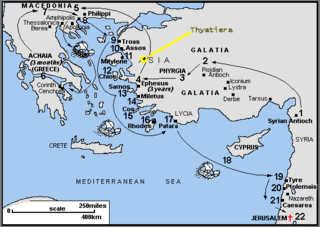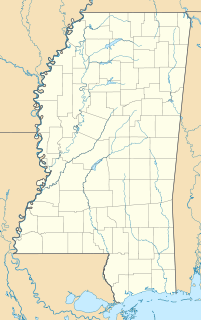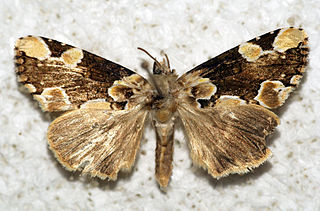
Laetitia Marie Laure Casta is a French actress and model.

Thyateira was the name of an ancient Greek city in Asia Minor, now the modern Turkish city of Akhisar. The name is probably Lydian. It lies in the far west of Turkey, south of Istanbul and almost due east of Athens. It is about 50 miles (80 km) from the Aegean Sea.

Mestizo is a term used in Hispanic America to refer to a person of a combined European and indigenous American descent. The term was used as an ethnic/racial category for mixed-race castas that evolved during the Spanish Empire. Although, broadly speaking, mestizo means someone of mixed European/indigenous heritage, the term did not have a fixed meaning in the colonial period. It was a formal label for individuals in official documentation, such as censuses, parish registers, Inquisition trials, and other matters. Priests and royal officials might label individuals as mestizos, but the term was also used for self-identification.

Akhisar is a county district and its town center in Manisa Province in the Aegean region of Western Turkey. Akhisar is also the ancient city of Thyatira.

Casta is a term which means "lineage" in Spanish and Portuguese and has historically been used as a racial and social identifier. It has been interpreted by certain historians during the 20th century to describe mixed-race individuals in New Spain were resulting from unions of Spaniards, Amerindians, and Africans. Basic mixed-race categories that appeared in official colonial documentation were mestizo, generally offspring of a Spaniard and an indigenous person; and mulato, offspring of a Spaniard and a black African. There were a plethora of terms for mixed-race persons of indigenous and African ancestry used in 18th-century casta paintings yet they are not known to have been widely used officially or unofficially in the Spanish Empire.

The peach blossom is a moth of the family Drepanidae. It was first described by Carl Linnaeus in his 1758 10th edition of Systema Naturae.

Portuguese wine is the result of traditions introduced to the region by ancient civilizations, such as the Phoenicians, Carthaginians, Greeks, and mostly the Romans. Portugal started to export its wines to Rome during the Roman Empire. Modern exports developed with trade to England after the Methuen Treaty in 1703. From this commerce a wide variety of wines started to be grown in Portugal. And, in 1758, one of the first wine-producing regions of the world, the Região Demarcada do Douro was created under the orientation of Marquis of Pombal, in the Douro Valley. Portugal has two wine-producing regions protected by UNESCO as World Heritage: the Douro Valley Wine Region and Pico Island Wine Region. Portugal has a big variety of local kinds, producing a very wide variety of different wines with distinctive personality.
The Battle of Thyatira was fought in 366 at Thyatira, Lydia, between the army of the Roman Emperor Valens and the army of the usurper Procopius, led by his general Gomoarius.

Lydia of Thyatira is a woman mentioned in the New Testament who is regarded as the first documented convert to Christianity in Europe. Several Christian denominations have designated her a saint.

Thyatira is an unincorporated community in eastern Tate County, Mississippi, United States. It is located approximately 11 miles east of the county seat of Senatobia and 21 miles west of Holly Springs in Marshall County. The main thoroughfare is Mississippi Highway 4. Thyatira is home to two of the oldest Churches of Christ on record in the state, both of which bear the same name: Thyatira Church of Christ. It lies at an elevation of 371 feet (131 m).

San Pedro de Casta District is one of thirty-two districts of the province Huarochirí in Peru. The town of San Pedro de Casta is known for its proximity to Marcahuasi, and receives the majority of its attention from this tourist attraction.

The Thyatirinae, or false owlet moths, are a subfamily of the moth family Drepanidae with about 200 species described. Until recently, most classifications treated this group as a separate family called Thyatiridae.

Thyatira is a genus of moths belonging to the subfamily Thyatirinae of the Drepanidae. It was erected by Ferdinand Ochsenheimer in 1816.
Thyatira bodemeyeri is a moth in the family Drepanidae. It was described by Otto Bang-Haas in 1934. It was described from Persia.
Thyatira brasiliensis is a moth in the family Drepanidae. It was described by Werny in 1966. It is found in Brazil.
Thyatira dysimata is a moth in the family Drepanidae. It was described by West in 1932. It is found in the Philippines (Luzon).
Thyatira hedemanni is a moth in the family Drepanidae. It was described by Hugo Theodor Christoph in 1885. It is found in Georgia, Turkey, Armenia, Iran and Azerbaijan.

Thyatira mexicana is a moth in the family Drepanidae. It was described by Henry Edwards in 1884. It is found in the US state of Arizona through Central America to South America.
Thyatira staphyla is a moth in the family Drepanidae. It was described by Paul Dognin in 1890. It is found in Loja Province, Ecuador.
Thyatira vicina is a moth in the family Drepanidae. It was described by Achille Guenée in 1852. It is found on Java and Bali in Indonesia.












